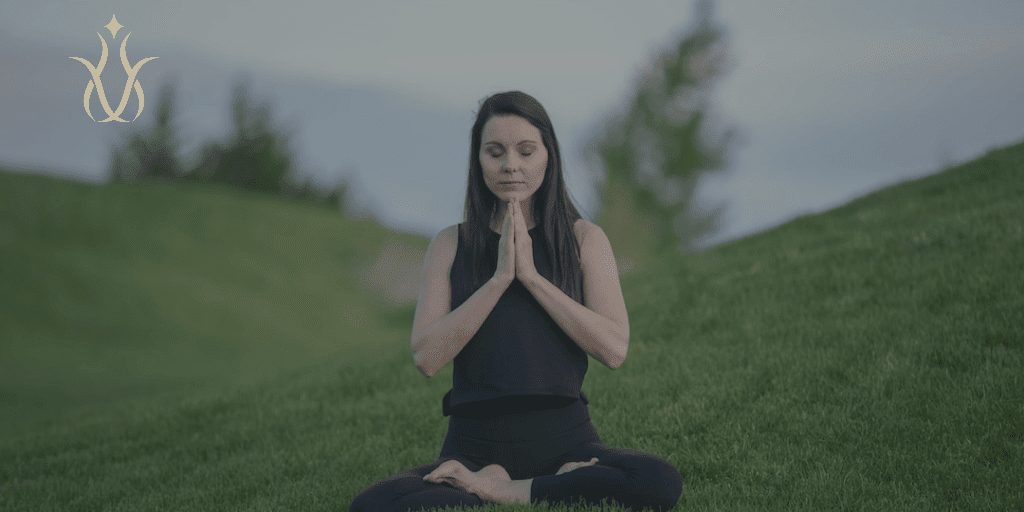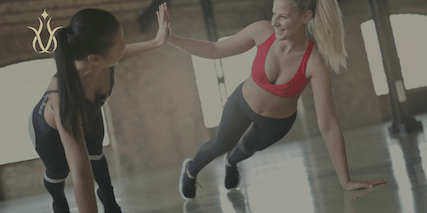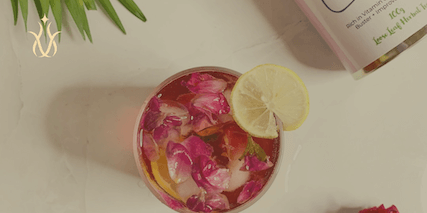Explore simple mindfulness meditation techniques that seamlessly integrate into your daily life. Unlock a state of present-moment awareness, reduce stress, and cultivate inner calm. Discover practical methods to enhance your well-being and embrace a mindful lifestyle. Start your journey towards peace and clarity today!
Introduction to Mindfulness Meditation
Welcome to our article on simple mindfulness meditation techniques that you can easily incorporate into your daily life. In today’s fast-paced world, stress and anxiety have become all too common, affecting our wellbeing and productivity. Fortunately, mindfulness meditation has gained significant popularity as an effective practice for reducing stress and promoting overall well-being.
Mindfulness meditation practice is a simple yet powerful technique that involves being fully present in the moment and non-judgmentally observing our thoughts, feelings, and sensations. It allows us to cultivate a state of awareness and acceptance, bringing a sense of calm and clarity to our minds.
The benefits of mindfulness meditation practice are supported by extensive scientific research. Numerous studies have shown that regular mindfulness practice can reduce stress, anxiety, and depression while improving attention, focus, and emotional well-being. In addition, it has been found to positively impact various aspects of our lives, from relationships and work performance to overall quality of life.
As more people recognise the transformative effects of mindfulness meditation, it has become increasingly popular as a tool for stress reduction and personal growth. People from all walks of life, including athletes, business professionals, and healthcare practitioners, have embraced mindfulness to enhance their well-being and improve their daily lives.
This article will explore simple techniques to practice mindfulness that you can easily integrate into your daily routine. Whether you are new to mindfulness or have some experience, these techniques will help you cultivate a greater sense of peace, clarity, and presence in your everyday life.
So, if you are ready to embark on a journey of self-discovery and inner peace, let’s dive into these simple mindfulness meditation techniques and unlock the profound benefits they can bring to your life.
Remember, mindfulness meditation practice is not about achieving perfection or eliminating all thoughts. It’s about creating a space for self-reflection and embracing the present moment with openness and curiosity. With practice and consistency, you can cultivate a deeper sense of mindfulness that will positively impact every aspect of your life.
Let’s begin this transformative journey together and discover the incredible power of practising mindfulness meditation.
Benefits of Mindfulness Meditation
Mindfulness practice has gained immense popularity due to its evidence-based benefits for our mental, emotional, and physical well-being. Let’s explore some scientifically supported advantages of incorporating mindfulness meditation into your daily life.
Reduced Stress and Anxiety:
Mindfulness meditation has been shown to reduce stress and anxiety levels significantly. A study published in the Journal of Consulting and Clinical Psychology found that mindfulness-based stress reduction programs significantly decreased anxiety symptoms among participants. By cultivating a non-judgmental awareness of the present moment, mindfulness helps us break free from the cycle of stress and promotes a sense of calm and relaxation.
Improved Focus and Attention:
In our fast-paced world, it can be challenging to stay focused and attentive. However, regular mindfulness practice can enhance our ability to concentrate and sustain attention. Research published in the Journal of Cognitive Enhancement demonstrated that just a few weeks of mindfulness training improved attention and working memory. By training our minds to stay present, mindfulness allows us to be more engaged and focused in our daily activities.
Enhanced Emotional Wellbeing:
Mindfulness practice profoundly impacts our emotional well-being. It helps us develop greater emotional resilience and regulate our emotions effectively. A study published in the Journal of Alternative and Complementary Medicine showed that mindfulness-based interventions reduced symptoms of depression and improved overall well-being. By cultivating a non-reactive and non-judgmental attitude towards our emotions, mindfulness allows us to respond to them with greater clarity and compassion.
Improved Sleep Quality:
Many individuals struggle with sleep disturbances, such as insomnia or poor sleep quality. Mindfulness practice has been found to be an effective tool for improving sleep. Research published in JAMA Internal Medicine demonstrated that mindfulness meditation practices significantly improved sleep quality and reduced insomnia symptoms. By calming the mind and reducing stress, mindfulness promotes a state of relaxation that facilitates better sleep.
Physical Health Benefits:
Beyond its mental and emotional benefits, mindfulness meditation practice also contributes to better physical health. Studies have shown that regular mindfulness practice can lower blood pressure, boost the immune system, and reduce the risk of chronic diseases. The mind-body connection is powerful, and by cultivating mindfulness, we can support our overall health and well-being.
Incorporating mindfulness practice into your daily life can have profound effects on your overall well-being. From mindfulness-based stress reduction to improving focus and attention, the evidence-based benefits of mindfulness are undeniable. By taking just a few minutes each day to practice mindfulness, you can transform your life and experience greater peace, clarity, and resilience.
So, let’s explore some simple mindfulness meditation techniques that you can easily incorporate into your daily routine. Remember, mindfulness is a skill that improves with practice, so be patient and gentle with yourself as you embark on this journey of self-discovery and inner peace.

Mindful Meditation Breathing Technique
One of the foundational mindfulness meditation practices is the mindful breathing technique. This simple yet powerful technique allows us to anchor our attention to the present moment by focusing on the sensations of our breath. Let’s explore how to practice mindful breathing and its evidence-based benefits.
Find a Comfortable Position:
Begin by finding a comfortable position, whether sitting on a chair, cushion or even lying down. Ensure that your body is relaxed and supported.
Bring Attention to the Breath:
Close your eyes gently and bring your attention to the natural rhythm of your breath. Notice the sensation of the breath as it enters and leaves your body. Focus on the physical sensations, such as the rising and falling of your abdomen or the coolness of the air as you inhale and the warmth as you exhale. Taking a few deep breaths can help focus the mind.
Cultivate Non-Judgmental Awareness:
As you practice mindful breathing, your own thoughts and distractions may arise. Instead of getting caught up in them, acknowledge them without judgment and gently guide your attention back to your breath. Remember, the aim is not to eliminate thoughts but to observe your wandering mind with non-reactivity.
Embrace the Present Moment:
Allow yourself to fully immerse in the present moment by directing your attention solely to the breath. Take a moment to notice the subtle sensations, the pauses between breaths, and the continuous flow of the breath. Embrace the stillness and tranquillity of the present moment.
Benefits of the Mindful Medication Breathing Technique:
Calming the Mind:
Mindful breathing activates the body’s relaxation response, reducing stress and anxiety. A study published in the Journal of Psychosomatic Research found that mindful breathing techniques significantly decreased anxiety levels among participants. Focusing on the breath creates space for calmness and mental clarity.
Grounding in the Present:
Mindful breathing anchors us in the present moment, helping to alleviate worries about the past or future. Research published in the journal Mindfulness demonstrated that mindful breathing increased present-moment awareness and reduced mind-wandering. By staying fully present, we enhance our ability to engage with tasks and experiences in the here and now.
Enhancing Self-Awareness:
The practice of mindful breathing cultivates self-awareness, allowing us to observe our thoughts, emotions, and physical sensations with greater clarity. This heightened self-awareness can lead to improved emotional regulation and a deeper understanding of ourselves.
Incorporating the mindful breathing technique into your daily life can profoundly impact your well-being. It is a simple yet potent tool that can be practised anytime and anywhere. By regularly engaging in mindful breathing, you can experience a sense of calm, presence, and resilience amidst the busyness of life.

Body Scan Meditation Technique
Body scan meditation is another valuable mindfulness meditation technique that can be incorporated into your daily life. This practice involves systematically scanning the body with attention and awareness, allowing you to cultivate a deeper connection between the mind and body. Let’s explore how to practice the body scan meditation technique and its benefits.
Find a Comfortable Position:
Begin by finding a comfortable position, either lying down or sitting in a chair with your feet flat on the floor. Ensure that your body is relaxed and supported.
Bring Attention to the Body:
Close your eyes gently and bring your attention to your body. Start by focusing on your breath, allowing it to anchor you to the present moment.
Systematically Scan the Body:
Begin at the top of your head and slowly move your attention down through each part of your body. Take a moment to focus attention on any sensations, tightness, or discomfort that you may notice. Allow your awareness to rest briefly on each body part before moving on to the next.
Observe Without Judgment:
As you scan each part of your body, simply observe the sensations without judgment. Notice any areas of tension or discomfort with a sense of curiosity and compassion. If your mind starts to wander, gently bring awareness back to the body and the present moment.
Cultivate Body Awareness:
You can develop a deeper sense of body awareness through body scan meditation. This practice helps to foster a more mindful and compassionate relationship with your body.
The evidence behind the Body Scan Meditation Technique:
Relaxation and Stress Reduction:
A study published in the Journal of Clinical Psychology demonstrated that regular body scan meditation techniques decreased perceived stress and increased relaxation among participants. By systematically scanning the body and releasing tension, you can experience a profound sense of relaxation.
Muscle Tension Release:
The body scan meditation allows you to become aware of any areas of muscle tension or tightness in the body. You can release and relax the muscles by directing your attention to these areas and observing them without judgment. This can be particularly beneficial for individuals who experience physical discomfort or chronic pain.
Enhancing Body Awareness:
The body scan meditation cultivates a heightened sense of body awareness. This increased awareness can help you become attuned to your body’s subtle signals and needs, allowing for more informed self-care and proactive health management.
Incorporating the body scan meditation into your daily routine can promote deep relaxation, reduce muscle tension, and enhance your overall body awareness. In addition, by regularly practising this technique, you can develop a greater sense of connection between your mind and body, leading to a more balanced and harmonious state.

Loving-Kindness Meditation Technique
Loving-kindness meditation is a powerful mindfulness technique that can significantly enrich your life. This practice involves cultivating compassion, kindness, and goodwill toward oneself and others. Let’s explore how to practice loving-kindness meditation and its benefits.
Find a Comfortable Posture:
Begin by finding a comfortable posture, sitting on a cushion or chair with your back straight and relaxed. Close your eyes gently or maintain a soft gaze.
Set Your Intention:
Start by setting your intention for the meditation practice. Reflect on your desire to cultivate love, compassion, and kindness towards yourself and others.
Focus on Self-Compassion:
Direct your attention towards yourself and silently repeat a series of well-wishes or phrases that resonate with you. For example, you can say, “May I be happy. May I be healthy? May I be safe? May I live with ease?” Repeat these phrases with sincerity and an open heart. Divert your attention away from any negative thoughts.
Extend Well-Wishes to Loved Ones:
Shift your focus to someone you love and care deeply about. Visualise their face or presence in your mind and extend the same well-wishes to them. Repeat phrases such as, “May you be happy. May you be healthy. May you be safe. May you live with ease.” Feel the warmth and affection as you send these wishes to them.
Extend Well-Wishes to Neutral Individuals:
Expand your circle of well-wishes to include neutral individuals, such as acquaintances or people you encounter daily. Extend the same phrases of loving-kindness to them, genuinely wishing for their well-being.
Extend Well-Wishes to Challenging Individuals:
In a more advanced stage of loving-kindness meditation, you can extend your well-wishes to individuals with whom you have difficulty or conflict. This practice can help cultivate empathy and understanding. Send them the same well-wishes, acknowledging their shared humanity.
Research has shown that Loving-Kindness Meditation offers several benefits:
Increased Positive Emotions:
Studies have demonstrated that regular practice of loving-kindness meditation can increase positive emotions, such as joy, gratitude, and love. You can enhance your overall emotional well-being by cultivating feelings of kindness and compassion.
Reduced Negative Emotions:
Loving-kindness meditation has also been found to reduce negative emotions, including anger, resentment, and anxiety. By consciously focusing on kindness and goodwill, you can lessen the grip of negative emotions on your mind.
Enhanced Social Connections:
Engaging in loving-kindness meditation has been shown to strengthen social connections and improve relationship satisfaction. This practice fosters a sense of empathy and understanding towards others, leading to more harmonious and compassionate interactions.
Incorporating loving-kindness mindfulness exercises into your daily routine can promote a deep sense of compassion, kindness, and connection with yourself and others. As you cultivate these qualities, you will experience greater emotional well-being, improved relationships, self-confidence, and an uplifted state of mind.

Walking Meditation Technique
Walking meditation is another simple yet powerful mindfulness exercise that you can easily incorporate into your daily life. This practice involves bringing your full attention and awareness to walking, allowing you to cultivate mindfulness.
Find a Suitable Location:
Find a quiet and peaceful location where you can walk comfortably and without distractions. It could be a park, a nature trail, or even a quiet area in your neighbourhood.
Start with Mindful Standing:
Stand still for a few moments and bring your awareness to your body. Feel the contact of your feet with the ground and bring your attention to your breath, allowing yourself to arrive fully in the present moment.
Begin Walking Slowly:
Next, begin walking slowly, paying attention to each step you take. Notice the sensations in your feet as they make contact with the ground. Be aware of the shifting of your weight, the movements of your legs, and the swinging of your arms.
Focus on Physical Sensations:
Direct your attention to the physical sensations of walking. Feel the pressure and sensation of your feet against the ground. Observe the movement of your legs and the subtle shifts in your body as you walk. Stay present with each step, returning your attention to the sensations whenever your mind wanders.
Maintain Present-Moment Awareness:
As you continue walking, maintain a sense of present-moment awareness. Be fully present in the experience, letting go of any thoughts about the past or the future. Embrace the simplicity of each step and the rhythmic flow of your movements. If your mind wanders just bring it back to the present moment, focusing on your own body sensations.
Research has shown that Walking Meditation offers several benefits:
Improved Attention and Focus:
Mindful walking helps cultivate focused attention and concentration. By directing your awareness to the physical sensations of walking, you train your mind to stay present and enhance your ability to focus on tasks throughout the day.
Increased Relaxation:
Engaging in walking meditation promotes relaxation and stress reduction. The rhythmic motion of walking, combined with mindful awareness, can create a sense of calm and tranquillity, allowing you to let go of tension and anxiety.
Enhanced Mind-Body Connection:
Walking meditation fosters a deeper connection between mind and body. By being fully present in the physical act of walking, you develop a greater awareness of your body’s sensations and movements. This mind-body connection can enhance your overall well-being and self-awareness.
Incorporating walking meditation exercises into your daily routine can be a refreshing and invigorating way to cultivate mindfulness. It offers an opportunity to reconnect with yourself and the world around you, even during a busy day. Whether you prefer a leisurely stroll or a brisk walk, the key is to bring mindful awareness to each step.
Mindful Eating Practice
One aspect of our lives that often goes unnoticed is our eating habits. However, by incorporating mindfulness into our meals, we can transform how we relate to food and nourish our bodies. Mindful eating is a practice that involves bringing awareness and full attention to the present moment during meals. Let’s explore how mindfulness can be applied to our eating experiences and the evidence-based benefits it offers.
This simple practice is an invitation to slow down, take a moment, tune in, and fully engage with the process of eating. It involves paying attention to the sensory experience of food, such as the taste, texture, and aroma, as well as the physical sensations of hunger and fullness. By bringing a mindful approach to our meals, we can develop a healthier and more balanced relationship with food.
Here are some tips and strategies for incorporating mindfulness into your eating habits:
Slow Down:
Instead of rushing through meals, take the time to slow down and savour each bite. Engage all your senses and bring awareness to your food’s flavours and textures. Eating slowly allows you to be fully present and enhances your enjoyment of the meal.
Pay Attention to Hunger and Fullness Cues:
Before you start eating, check in with your body to assess your level of hunger. Then, eat when you’re hungry and stop when you’re comfortably full. Mindful eating encourages tuning in to your body’s signals, helping you make more conscious choices about when and how much to eat.
Remove Distractions:
Minimise distractions during mealtimes. Put away electronic devices, turn off the TV, and create a calm and quiet environment. Focusing solely on your meal allows you to fully experience the tastes and sensations without being mentally scattered.
Research has shown that mindful eating can have several benefits:
Healthier Food Choices:
Eating mindfully makes us more attuned to our body’s needs and cravings. This awareness allows us to make healthier food choices and avoid mindless eating. We can cultivate a balanced and nutritious diet by paying attention to the nourishment our bodies require.
Reduced Overeating:
Mindful eating helps us become more in tune with our body’s signals of hunger and fullness. This awareness can reduce overeating and promote a healthier relationship with food. By listening to our bodies and eating mindfully, we can better understand our true hunger and satiety cues.
Enhanced Dining Experience:
Engaging in mindful eating can transform how we experience meals. We can fully appreciate each bite’s flavours, textures, and sensations by bringing our attention to the present moment. This heightened awareness can make our meals more enjoyable and satisfying.
Incorporating mindfulness into our eating habits can profoundly impact our overall well-being. It allows us to cultivate a healthier relationship with food, become more attuned to our bodies, and enhance the dining experience. By practising mindful eating, we can nourish our bodies and minds in a more balanced.
Tips for Incorporating Meditation into Daily Life
Incorporating mindfulness practices into your daily routine doesn’t have to be complicated. With a few practical strategies and a commitment to consistency, you can seamlessly integrate mindfulness exercises into your busy schedule. Here are some tips to help you make meditation a regular part of your daily life.
Set Aside Dedicated Time:
Carve out a specific time each day for your meditation practice. It can be in the morning, during a lunch break, or before bedtime. You create a sense of structure and prioritise your mindfulness and meditation practice by designating a dedicated time slot.
Start with Shorter Sessions:
If you’re new to meditation, begin with shorter sessions, such as 5 to 10 minutes. Then, as you become more comfortable, gradually increase the duration. Starting small allows you to build consistency and prevents meditation from feeling overwhelming.
Find a Quiet and Comfortable Space:
Choose a quiet and peaceful environment for your meditation practice. It can be a corner of your home, a serene outdoor spot, or any place where you can sit comfortably without distractions. Creating a conducive space enhances your focus and relaxation.
Overcome Common Challenges:
It’s natural to encounter challenges when establishing a meditation routine. Common obstacles include distractions, racing thoughts, and difficulty sitting still. To overcome these challenges, consider using guided meditation apps or videos, experimenting with different meditation techniques, or seeking guidance from experienced meditators or teachers.
Be Consistent:
Consistency is key to reaping the benefits of meditation. Aim to practice daily, even if it’s for a shorter duration. Regularity helps you establish a habit and allows meditation to become an integral part of your lifestyle.
Practice Self-Compassion:
Be kind to yourself throughout your meditation journey. It’s normal to have days when your mind feels restless or when finding time for meditation becomes challenging. Instead of getting discouraged, approach these moments with self-compassion. Remember, meditation is a practice, and every session contributes to your overall well-being.
Research has shown that consistency in mindfulness and meditation practice yields greater benefits. By integrating meditation into your daily life and overcoming common challenges, you can experience the transformative power of this ancient practice.
Remember, the essence of practising mindfulness lies in the process, not the outcome. So, embrace each meditation session as an opportunity to cultivate presence, mindfulness, and inner calm. Whether you start with a few minutes or gradually increase your practice, the key is to remain consistent and patient with yourself. With time, you’ll discover the profound impact that regular meditation can have on your overall well-being.
Creating a Meditation Routine
Establishing a structured meditation routine is important to making meditation a consistent and beneficial part of your daily life. By following a few simple steps, you can create a personalised routine that works for you.
Let’s explore how to create a meditation routine that supports your well-being and mindfulness practice.
Set Clear Goals:
Begin by clarifying your intentions and goals for practising mindfulness and meditation. Then, reflect on what you hope to achieve through your practice. It could be reducing stress, improving focus, cultivating inner peace, or enhancing self-awareness. Clear goals will help you stay motivated and focused during your meditation sessions.
Choose Suitable Meditation Techniques:
Various mindfulness exercises are available, each offering unique benefits. Experiment with different methods to find the ones that resonate with you. Some popular options include mindfulness meditation, loving-kindness meditation, or focused breathing. Choose techniques that align with your goals and preferences.
Establish a Regular Schedule:
Consistency is key when it comes to reaping the benefits of meditation. Determine the best time and duration for your meditation session and create a regular schedule. Whether it’s early morning, during a break, or before bed, find a time that works for you. Aim for at least 10 to 15 minutes of daily meditation, gradually increasing the duration as you become more comfortable.
Explore Different Meditation Formats:
Meditation can take different forms to suit your preferences. For example, you can practice guided meditations using apps or online resources, participate in group meditation sessions, or engage in silent meditation. Experiment with different formats to find what resonates with you and keeps you engaged in your practice.
Establish a Dedicated Space:
Create a dedicated space for your meditation practice. It doesn’t have to be elaborate—a quiet corner in your home or a designated spot outdoors can work perfectly. However, ensure the space is clean, comfortable, and free from distractions. This space will serve as your sanctuary for meditation, helping you cultivate a focused and peaceful mindset.
Track Your Progress:
Record your meditation practice to track your progress and stay motivated. You can use a meditation journal to jot down your experiences, insights, and challenges. Tracking your progress will help you see the positive changes in your practice and inspire you along the way.
Having a structured meditation routine offers several benefits. Research suggests that a consistent meditation practice enhances the technique’s effectiveness and increases positive outcomes. Creating a routine establishes a sense of discipline and commitment to your practice, leading to greater mindfulness, stress reduction, and overall well-being.
Remember, your meditation routine should be flexible and adaptable to your lifestyle. Be open to exploring new techniques and adjusting your schedule as needed. The key is creating a sustainable and supportive routine for your mindfulness journey.
Overcoming Challenges in Meditation Practice
While meditation offers numerous benefits, it’s common to encounter challenges along the way. Rest assured, you are not alone in facing difficulties during meditation. Let’s explore some common challenges and practical strategies to overcome them, allowing you to experience the full potential of mindfulness meditation.
Racing Thoughts:
One of the most common challenges in meditation is the constant stream of thoughts that arise. It’s natural for the mind to wander, but the key is gently redirecting your attention to the present moment. When you notice your thoughts drifting, acknowledge them without judgment and guide your focus back to your chosen anchor point, such as the breath or a mantra. This gentle redirection helps cultivate focus and resilience in the face of racing thoughts.
Restlessness:
Feeling restless or agitated during meditation is another challenge many encounter. If restlessness arises, bring your attention to the physical sensations of restlessness without trying to suppress or change them. Instead, observe the restlessness with curiosity and acceptance, allowing it to be present without judgment. Gradually, you will find that the restlessness naturally subsides, and a sense of calmness emerges.
Difficulty Maintaining Focus:
Staying focused during meditation can be challenging, especially when distractions pull your attention away. One helpful strategy is to use anchor points, such as the breath or a specific sensation in the body, to ground your attention. Then, when distractions arise, gently bring your focus back to the anchor point, using it as a guide to anchor your awareness in the present moment.
Seeking Guidance:
If you struggle with specific challenges, seeking guidance can be invaluable. Meditation teachers, mindfulness courses, or reputable online resources can offer valuable insights and techniques to address your concerns. In addition, they can provide guidance on various meditation practices, offer support, and help you navigate any difficulties you may encounter.
Patience, Persistence, and Self-Compassion:
Remember that meditation is a practice, and progress takes time. It’s important to approach your meditation practice with patience and persistence. Don’t get discouraged by occasional challenges or setbacks. Instead, approach them with self-compassion and kindness. Treat yourself with understanding and accept that meditation is a journey of self-discovery and growth.
Research has shown that practising mindfulness meditation with patience and self-compassion can improve mental well-being and overall quality of life. Furthermore, by embracing challenges as opportunities for growth and learning, you can cultivate resilience and deepen your meditation practice.
As you navigate the ups and downs of your meditation journey, remember that challenges are part of the process. Embrace them as valuable lessons and reminders to stay present and committed to your practice. With time, patience, and a gentle approach, you will overcome these challenges and experience the transformative power of mindfulness meditation.
Conclusion
Mindfulness meditation, characterised by being present and non-judgmental, has gained popularity as a tool for reducing stress, improving focus, and enhancing emotional well-being. Scientific research has shown that practising mindfulness meditation can reduce stress and anxiety, improve attention and cognitive function, and increase emotional resilience.
Incorporating mindfulness meditation into your daily routine creates space for self-reflection, stress reduction, and personal growth. As you practice mindfulness meditation, you open yourself to the potential for transformative effects. By cultivating awareness, compassion, and presence, you create a foundation for a more balanced, fulfilling, and meaningful life.
Start today and experience the positive changes that practising mindfulness meditation can bring to your life.
Frequently Asked Questions about Mindfulness Meditation Techniques
1. What is mindfulness meditation?
Mindfulness meditation is a form of meditation where you focus your mind on the present moment, acknowledging and accepting it without judgment. This form of meditation helps you better understand your mind and emotions, fostering a healthier relationship with your thoughts and feelings.
2. How can I incorporate mindfulness meditation into my daily routine?
Incorporating mindfulness practice into your daily routine can be as simple as taking a few minutes each day to focus on your breath. This can be done at any time – while brushing your teeth, commuting, or even during a break at work. Gradually, as you get more comfortable, you can increase the duration and incorporate more formal meditation practices.
3. I am a beginner. How long should I meditate each day?
If you’re a beginner, it’s best to start with short sessions – even just a few minutes can be beneficial. As you grow more comfortable with the practice, you can gradually increase the duration to 15-20 minutes or more. Remember, the quality of your mindfulness practice matters more than the duration.
4. How can mindfulness meditation improve my mental health?
Numerous scientific studies, such as those published in the Journal of Psychiatric Practice, show that mindfulness practice can reduce symptoms of stress, anxiety, and depression. It improves mental health by teaching us to become less reactive to our thoughts and feelings, which promotes emotional regulation and improves mood.
5. What is the best time to meditate?
There is no “best” time to meditate—it entirely depends on your schedule and when you feel most alert and relaxed. Some people prefer meditating first thing in the morning to set a positive tone for the day, while others meditate in the evening to unwind. Experiment with different times to see what works best for you.
6. How do I Meditate for Sleep?
Meditating for sleep involves using techniques designed to promote relaxation and combat insomnia. Here are some steps on how to do it:
- Choose the Right Setting: Your meditation space should be quiet, comfortable, and free of distractions. Make sure the room temperature is suitable for you. Dimming the lights can also help set a calming atmosphere.
- Relax Your Body: You can begin with progressive muscle relaxation. This involves tensing and then releasing each muscle group in your body, starting from your toes and working your way up to your head.
- Focus on Your Breath: Deep and slow breathing can help you relax. Close your eyes and focus on your breath. Try to inhale for a count of 4, hold your breath for 7, and exhale for 8. This 4-7-8 technique can slow your heart rate and calm your mind.
- Use Guided Imagery: Visualize a peaceful scene, such as a beach at sunset or a quiet forest. Try to involve all your senses. For example, if you’re imagining a forest, think about the smell of the trees, the sound of birds, and the feeling of fresh air.
- Mindfulness Meditation: Paying attention to the present moment without judgement can also help you relax. Acknowledge any thoughts that come up, and then let them pass without dwelling on them.
- Body Scan: Another helpful technique is the body scan. Start from your toes and move upwards, paying attention to each part of your body, noticing any sensations, and releasing tension.
7. I find it hard to focus while meditating. What should I do?
If you’re finding it hard to focus, remember that this is completely normal, especially when you’re just starting. Mindfulness is about acknowledging your thoughts and emotions without judgement, so gently bring your focus back to your breath or the present moment when you notice your mind wandering.
8. What are the best mindfulness meditation apps or online courses to help me?
There are numerous mindfulness meditation apps and online courses available. Here are a few great ones that you might consider:
- Headspace: This popular meditation app provides numerous guided meditations to support a variety of mental health concerns, including anxiety and stress.
- Calm: Another highly-rated mindfulness app, Calm provides an array of guided meditations, sleep stories, breathing programs, stretching exercises, and relaxing music.
- Insight Timer: With thousands of free meditations, this app is a favourite among many mindfulness practitioners.
- 10% Happier: This app provides practical teachings for beginners and intermediate meditators.
- Mindfulness.com: This platform provides a range of mindfulness courses.
- The Mindfulness Summit: This is an online event that features numerous mindfulness experts.
Resources:
Mayo Clinic. (2021). Meditation: A simple, fast way to reduce stress. Available from: https://www.mayoclinic.org/tests-procedures/meditation/in-depth/meditation/art-20045858
American Psychological Association. (2015). Paying Attention to Mindfulness. Available from: https://www.apa.org/monitor/2015/03/cover-mindfulness
Mindful.org. (2021). Getting Started with Mindfulness. Available from: https://www.mindful.org/meditation/mindfulness-getting-started/
Rusch HL et al (2019). The effect of mindfulness meditation on sleep quality: a systematic review and meta-analysis of randomized controlled trials. Available from: https://pubmed.ncbi.nlm.nih.gov/30575050/
Hilton L et al (2017). Mindfulness Meditation for Chronic Pain: Systematic Review and Meta-analysis. Available from: https://pubmed.ncbi.nlm.nih.gov/27658913/
Disclaimer: This article is for informational purposes only and should not replace professional medical advice. If you have specific concerns or medical conditions, it is recommended to consult with a healthcare professional for personalised guidance and support.
Related Topics:
The Best Meditation Retreats in The World
The Best Meditation Apps for Achieving Better Sleep.






